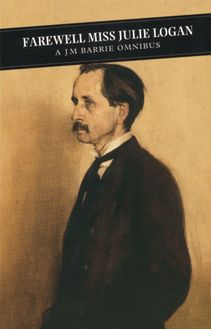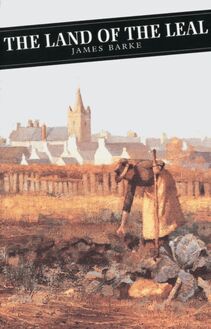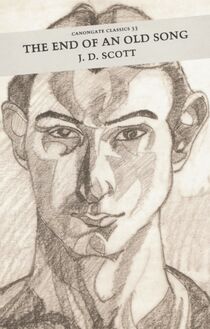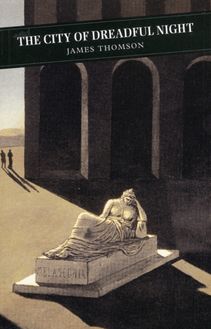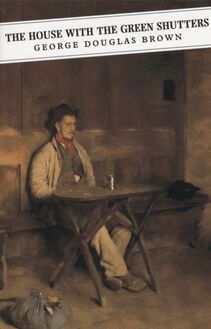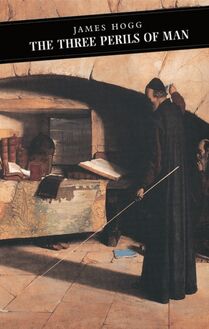Grey Granite , livre ebook
128
pages
English
Ebooks
2010
Vous pourrez modifier la taille du texte de cet ouvrage
Obtenez un accès à la bibliothèque pour le consulter en ligne En savoir plus
Découvre YouScribe en t'inscrivant gratuitement
Découvre YouScribe en t'inscrivant gratuitement
128
pages
English
Ebooks
2010
Vous pourrez modifier la taille du texte de cet ouvrage
Obtenez un accès à la bibliothèque pour le consulter en ligne En savoir plus
Publié par
Date de parution
01 juillet 2010
Nombre de lectures
1
EAN13
9781847678065
Langue
English
Publié par
Date de parution
01 juillet 2010
Nombre de lectures
1
EAN13
9781847678065
Langue
English
to Hugh MacDiarmid
Contents
Map of The Land of a Scots Quair
Cautionary Note
Introduction
Note on the Text
I Epidote
II Sphene
III Apatite
IV Zircon
Grey Granite: Curtain Raiser
Notes
Glossary
Map of The Land of a Scota Quair
Cautionary Note
The ‘Duncairn’ of this novel was originally ‘Dundon’. Unfortunately, several English journals in pre-publication notices of the book described my imaginary city as Dundee, two Scottish sheets identified it with Aberdeen, and at least one American newspaper went considerably astray and stated that it was Edinburgh faintly disguised.
Instead, it is merely the city which the inhabitants of the Mearns (not foreseeing my requirements in completing my trilogy) have hitherto failed to build.
L. G. G.
Introduction
When Grey Granite was published at the end of 1934 it was advertised as the last volume of a trilogy. Yet many who had missed the first two novels were swept off their feet when they read it. This seems to have been the experience of Tom Wintringham, the influential editor of Left Review , who termed it ‘the best novel written this side the Channel since Hardy stopped writing’. 1 And it was certainly that of the Sheffield Daily Telegraph reviewer, who was glad he had not come across the earlier volumes because, after the overpowering experience of Grey Granite , the ‘pleasure of their first perusal’ was still to come (31 January 1935). Page Cooper of Doubleday (Gibbon’s American publisher), who did of course know the other books, could not keep it out of her mind and found it ‘a bigger, more disturbing, and beautiful book than Cloud Howe . One hesitates to label anything with the word genius, but there isn’t any other for the quality of his mind.’ 2 Of those who went in for comparisons, the New York Times reviewer was almost as enthusiastic, calling it ‘Gibbon’s most swiftly moving book and most adventurous in ideas’ (3 February 1935). More significantly, perhaps, Gibbon’s greatest Scottish contemporaries, Hugh MacDiarmid and Edwin Muir, both liked it: MacDiarmid enthusiastically, Muir less so (though he preferred it to its predecessors). 3
The majority of those who had read all three parts seem to have agreed with the Glasgow Herald in the judgment that is still, I think, standard among ‘common readers’: ‘ Sunset Song stands by itself, a good novel; Cloud Howe and Grey Granite are two rather ramshackle outhouses which have been added to it.’ This, however, is to forget that Gibbon had planned a trilogy from the first, 4 and to ignore the fact that each of the outhouses has its own effective structure, however different from nineteenth-century and Edwardian norms. Like all creative writers Gibbon had not worked out the total shape right at the start; once begun, the novels flowed with their own momentum and took on new features as he wrote. That his original title for Cloud Howe was The Morning Star indicates that he cannot at first have thought of organizing it around contrasting cloud-formations passing over the vale of the Mearns, but perhaps around heavenly bodies ironically conceived. And when he came to grips with Grey Granite he scrapped his original plan of a Prelude that would make the beginning of Grey Granite formally parallel to those of the earlier novels, with their milieux firmly set in place and time (this is given in the Appendix). The result is that Duncairn has depth, history, and background only for those in the know; for them, Gibbon’s city is more like Aberdeen than Dundee, Glasgow or Edinburgh, and the glancing identifications and allusions provide, quietly and unobtrusively, many of the in-jokes of which Gibbon was so fond. 5 For the wider readership, Duncairn is an imaginary city, the crumbling backdrop to the personal and political paradigms set within it. The novel has thus a much freer form than Sunset Song , framed by Prelude and Epilude; its frame consists of two passages about Chris, where interior monologue deftly incorporates third-person narration. With the first, we begin in medias res with Chris ‘old at thirty-eight?’ puffing and panting as she lugs her groceries up the urban height of the Windmill Steps, and end with her in the countryside, above the croft she has ‘retired to’, enigmatically losing consciousness on top of the Barmekin.
When Gibbon began Sunset Song he told his wife the whole trilogy was to be written round ‘a woman’, 6 and the framing just mentioned seems to show that this is as true of Grey Granite as it is of the earlier novels. But Chris, though as moving and convincing as ever, is in a sense peripheral to the main action, the growth and development of her son Εwan, which parallels and contrasts with her own rural adolescence in Sunset Song . The book’s four sections are called after different constituents of granite: Epidote (a greenish silicate of calcium, aluminium, and iron), Sphene (whose crystals are wedge-shaped and which contains the element titanium strong, light, corrosion-resistant), Apatite (consisting of calcium phosphate and fluoride), and Zircon (‘a tetragonal mineral, of which jacinth and jargoon are varieties’ jacinth is reddish orange, and jargoon brilliant and colourless). They mirror the stages in Ewan’s transformation into the kind of person required by the stark, sure creed that will cut like a knife:
Cold and controlled he had always been, some lirk in his nature and upbringing that Chris loved, who so hated folk in a fuss. But now that quality she’d likened to grey granite itself, that something she’d seen change in Duncairn from slaty grey to a glow of fire, was transmuting again before her eyes into something darker and coarser, in essence the same, in tint antrin queer.
Gibbon’s theme reflects one of the commonest spiritual sequences of the thirties the process whereby a bourgeois intellectual came to join the Communist Party and decided to give over his life to it. Many have felt with Isobel Murray that ‘the greatest weakness of the book is the character and role of Ewan’; 7 others have seen in him its main strength. That was certainly Eric Linklater’s view before he had even finished it. He has left a unique record of his immediate responses in a letter written towards the end of 1934:
Chris, I think, has lost a little of the character but she’s lost it to Ewan, who’s coming very robustly alive; & the curious angular growth of his mind is very true to type. So far I can sympathise with his nascent politics very comfortably, & if the police had behaved in that manner his bottle-throwing would have been not merely noble, but natural. 8
The function of the granite symbolism is to highlight Ewan’s willed transformation into the ‘more than human’: Ewan comes to be like granite just as Stalin means steel and Molotov means hammerman. He inherits from Chris a still centre, a refusal to be anything other than himself, an aloofness that others find unsympathetic and haughty. He respects what Gibbon sees as the cool detachment of science and is utterly blind to the arts; his sense of humour is, to put it mildly, limited, and at one point Chris says, ‘human beings were never of much interest to him.’ Yet it would be wrong to say he is emotionless; it is merely that he can keep his ordinary feelings under control his admiring affection for Chris, his detestation of what breeds nauseous slums and stunts the wretched of the earth, his contempt for the inchoate, the indecisive, and the second-rate. His most intense emotions are those of the communist mystic, which come on him towards the end of the novel, an essentially religious identification with the enslaved and the exploited throughout recorded history. They are only made possible by what Ewan learns in the factory, the working-class movement, and the police cell, but they are rooted in a character trait he displayed even in boyhood, in his friendship for Charlie Cronin the spinner’s son and his strange bond with old Moultrie, survival from an age of pre-industrial knacks and skills, who on his deathbed shared with Ewan the precious essence of the old ways ( Cloud Howe , Canongate Classics edition, p.192). They also link him to Chris and show that despite his crystalline hardness, his sensibility is akin to hers to the Chris who in her girlhood saw visions of prehistoric hunters and farmers and identified with the tortured Covenanters in the Whigs’ Vault at Dunnottar.
William K. Malcolm, in what is perhaps the best critical presentation of Ewan to date, 9 draws attention to his literary precursors in the Soviet Pantheon, and links him to the Russian and international debate over the nature of the Communist Hero and how to present him. He sees Gorki’s Mother (1906) and Gladkov’s Cement (1925) as the most important analogues, and Ewan’s brusque rejection of Ellen as being in their tradition, where ‘the protagonist demonstrates his heroic fortitude … by resisting the threat made to his greater political destiny by romantic involvement’ (p.161). But it is not strictly correct to speak of a ‘socialist realist’ influence here: the dogma was not theoretically formulated until 1934, and therefore could have had no influence on either Mother or Cement . Orthodox communists have always criticized Gibbon’s presentation of Ewan. They have felt that the ideal communist leader should be warm, sympathetic, many-sided, and richly human all the things that socialist realism said he should be, and which Ewan is not. His coldly analytic mind drives him to extreme and ‘super-revolutionary’ conclusions, to ‘an intellectualized and at times inhuman conception of the workers’ struggle for Socialism’, and his remarks on tactics do not in the least resemble the real communist tactics of the time; they are pure fantasy on Gibbon’s part. 10 But the whole course of history since 1934 seems to show that they were not fantasy. The book is dedicated to Hugh MacDiarmid, and as early as 1926, in the First Hymn to Lenin , MacDiarmid had
